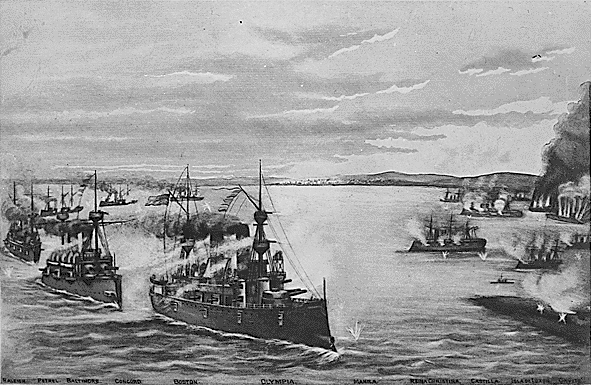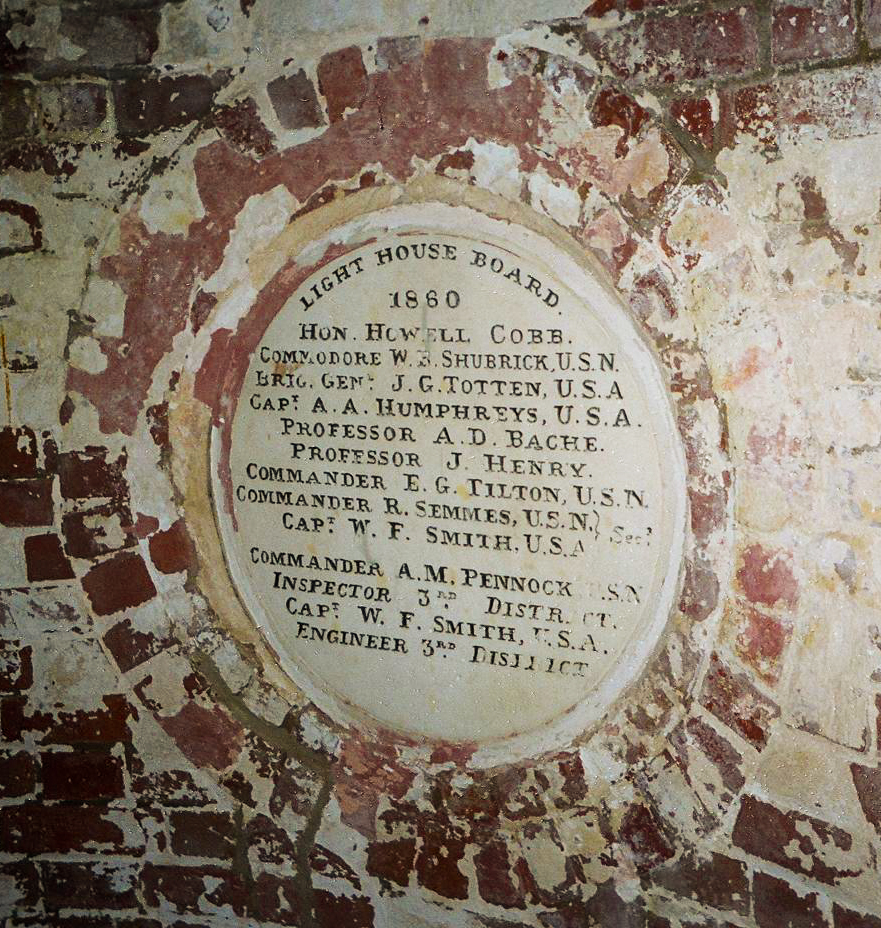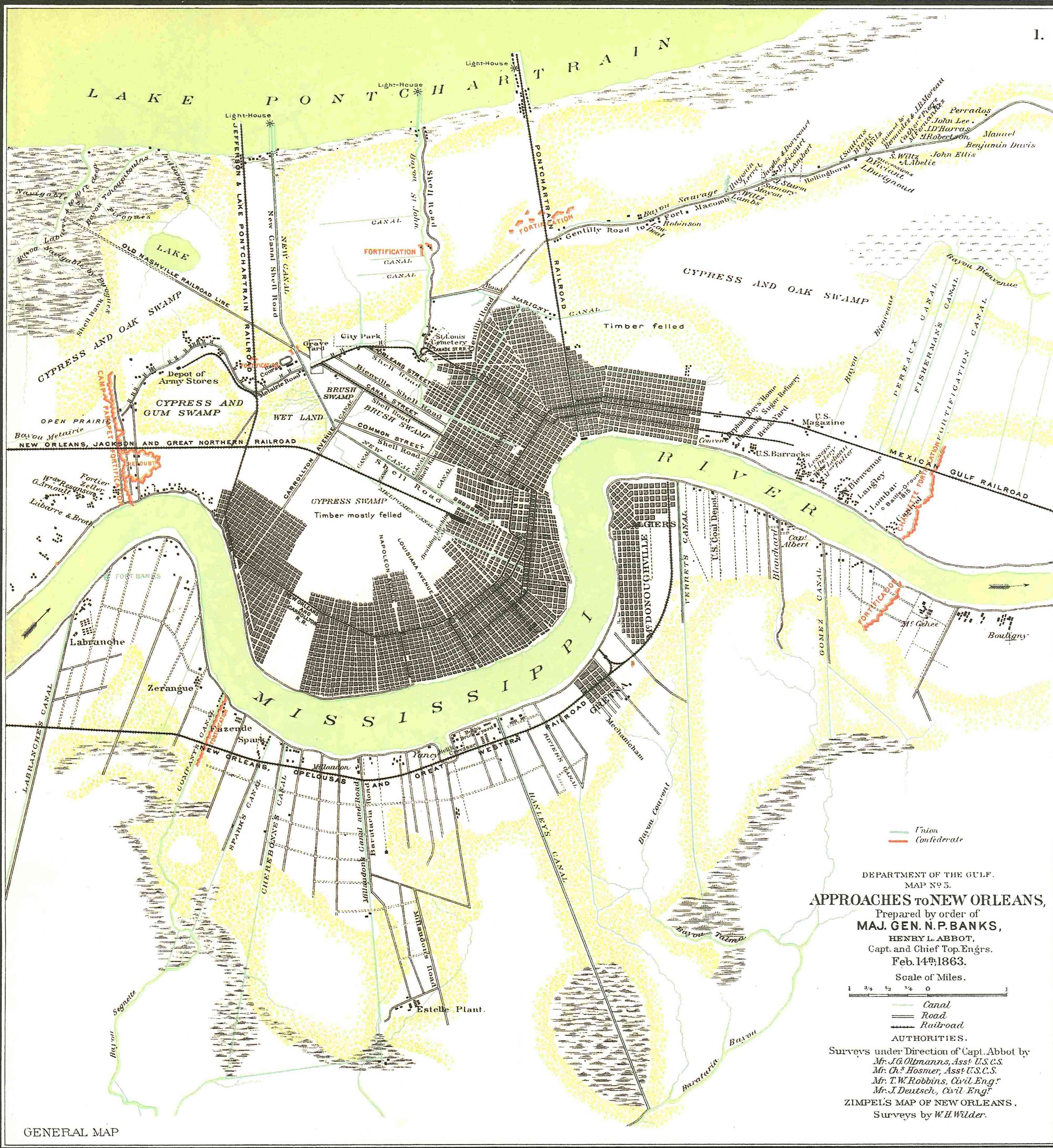|
George Dewey
George Dewey (December 26, 1837January 16, 1917) was Admiral of the Navy, the only person in United States history to have attained that rank. He is best known for his victory at the Battle of Manila Bay during the Spanish–American War, with the loss of only a single crewman on the American side. Dewey was born in Montpelier, Vermont. At age 15, Dewey's father enrolled him at Norwich University in Northfield, Vermont. Two years later Norwich expelled him for drunkenness and herding sheep into the barracks. Summarily, he entered the United States Naval Academy in 1854. He graduated from the academy in 1858 and was assigned as the executive lieutenant of the at the beginning of the Civil War. He participated in the capture of New Orleans and the Siege of Port Hudson, helping the Union take control of the Mississippi River. By the end of the war, Dewey reached the rank of lieutenant commander. After the Civil War, Dewey undertook a variety of assignments, serving on multiple s ... [...More Info...] [...Related Items...] OR: [Wikipedia] [Google] [Baidu] |
Admiral Of The Navy
Admiral is one of the highest ranks in some navies. In the Commonwealth nations and the United States, a "full" admiral is equivalent to a "full" general in the army or the air force, and is above vice admiral and below admiral of the fleet, or fleet admiral. Etymology The word in Middle English comes from Anglo-French , "commander", from Medieval Latin , . These evolved from the Arabic () – (), “king, prince, chief, leader, nobleman, lord, a governor, commander, or person who rules over a number of people,” and (), the Arabic article answering to “the.” In Arabic, admiral is also represented as (), where () means the sea. The 1818 edition of Samuel Johnson's ''A Dictionary of the English Language'', edited and revised by the Rev. Henry John Todd, states that the term “has been traced to the Arab. emir or amir, lord or commander, and the Gr. , the sea, q. d. ''prince of the sea''. The word is written both with and without the d, in other languages, as well ... [...More Info...] [...Related Items...] OR: [Wikipedia] [Google] [Baidu] |
Battle Of Manila Bay
The Battle of Manila Bay ( fil, Labanan sa Look ng Maynila; es, Batalla de Bahía de Manila), also known as the Battle of Cavite, took place on 1 May 1898, during the Spanish–American War. The American Asiatic Squadron under Commodore George Dewey engaged and destroyed the Spanish Pacific Squadron under ''Contraalmirante'' ( Rear admiral) Patricio Montojo. The battle took place in Manila Bay in the Philippines, and was the first major engagement of the Spanish–American War. The battle was one of the most decisive naval battles in history and marked the end of the Spanish colonial period in Philippine history. Tensions between Spain and the United States worsened over the Spanish conduct during their efforts to quell the Cuban War of Independence, with many Americans being agitated by largely falsified reports of Spanish atrocities against the Cuban population. In January 1898, fearing the fate of American interests in Cuba due to the war, the cruiser USS ''Maine ... [...More Info...] [...Related Items...] OR: [Wikipedia] [Google] [Baidu] |
Commodore (United States)
Commodore was an early title and later a rank in the United States Navy, United States Coast Guard and the Confederate States Navy, and also has been a rank in the United States Public Health Service Commissioned Corps and the National Oceanic and Atmospheric Administration Commissioned Officer Corps (NOAA Corps) and its ancestor organizations. For over two centuries, the designation has been given varying levels of authority and formality. Today, it is no longer a specific rank within active-duty or reserve forces or in the Public Health Service Commissioned Corps or NOAA Corps, but it remains in use as an ''honorary title'' within the U.S. Navy and U.S. Coast Guard for those senior captains (pay grade O-6) in command of operational organizations composed of multiple independent subordinate naval units (e.g., multiple independent ships or aviation squadrons). However, "commodore" is a rank that is actively used to this day in the United States Coast Guard Auxiliary, the civ ... [...More Info...] [...Related Items...] OR: [Wikipedia] [Google] [Baidu] |
Board Of Inspection And Survey
The Board of Inspection and Survey (INSURV) is a United States Navy organization whose purpose is to inspect and assess the material condition of U.S. Navy vessels. The Board is currently headquartered at Naval Amphibious Base Little Creek, Virginia. INSURV teams The Board performs its tasks by sending out teams at intervals not to exceed 60 months per Naval Ship. These teams evaluate a ship's readiness to conduct combat operations at sea, through an extensive system of checks on installed equipment. New construction When a ship has been constructed by a shipyard and turned over to the U.S. Navy, an INSURV team must certify the vessel prior to declaring it operational. History The ''Board of Inspection and Survey'' was established by Congress to ensure that the ships of the United States Navy are properly equipped for prompt, reliable, sustained mission readiness at sea. Originally established in 1868 under Admiral David Farragut, the board was reconstituted in 1877 with Admi ... [...More Info...] [...Related Items...] OR: [Wikipedia] [Google] [Baidu] |
United States Lighthouse Board
The United States Lighthouse Board was the second agency of the U.S. federal government, under the Department of Treasury, responsible for the construction and maintenance of all lighthouses and navigation aids in the United States, between 1852 and 1910. The new agency was created following complaints of the shipping industry of the previous administration of lighthouses under the Treasury's Lighthouse Establishment, which had had jurisdiction since 1791, and since 1820, been under the control of Stephen Pleasonton. The quasi-military board first met on April 28, 1851, and with its establishment, the administration of lighthouses and other aids to navigation would take their largest leap toward modernization since the inception of federal government control.Amy K. Marshall "Frequently Close to the Point of Peril: A History of Buoys and Tenders in U.S. Coastal Waters, 1789–1939'", A Master's Thesis In 1910, the Lighthouse Board was disestablished in favor of a more civilian Li ... [...More Info...] [...Related Items...] OR: [Wikipedia] [Google] [Baidu] |
Mississippi River
The Mississippi River is the second-longest river and chief river of the second-largest drainage system in North America, second only to the Hudson Bay drainage system. From its traditional source of Lake Itasca in northern Minnesota, it flows generally south for to the Mississippi River Delta in the Gulf of Mexico. With its many tributaries, the Mississippi's watershed drains all or parts of 32 U.S. states and two Canadian provinces between the Rocky and Appalachian mountains. The main stem is entirely within the United States; the total drainage basin is , of which only about one percent is in Canada. The Mississippi ranks as the thirteenth-largest river by discharge in the world. The river either borders or passes through the states of Minnesota, Wisconsin, Iowa, Illinois, Missouri, Kentucky, Tennessee, Arkansas, Mississippi, and Louisiana. Native Americans have lived along the Mississippi River and its tributaries for thousands of years. Most were hunter-ga ... [...More Info...] [...Related Items...] OR: [Wikipedia] [Google] [Baidu] |
Union (American Civil War)
During the American Civil War, the Union, also known as the North, referred to the United States led by President Abraham Lincoln. It was opposed by the secessionist Confederate States of America (CSA), informally called "the Confederacy" or "the South". The Union is named after its declared goal of preserving the United States as a constitutional union. "Union" is used in the U.S. Constitution to refer to the founding formation of the people, and to the states in union. In the context of the Civil War, it has also often been used as a synonym for "the northern states loyal to the United States government;" in this meaning, the Union consisted of 20 free states and five border states. The Union Army was a new formation comprising mostly state units, together with units from the regular U.S. Army. The border states were essential as a supply base for the Union invasion of the Confederacy, and Lincoln realized he could not win the war without control of them, especially Maryla ... [...More Info...] [...Related Items...] OR: [Wikipedia] [Google] [Baidu] |
Siege Of Port Hudson
The siege of Port Hudson, Louisiana, (May 22 – July 9, 1863) was the final engagement in the Union (American Civil War), Union campaign to recapture the Mississippi River in the American Civil War. While Major General#United States, Union General Ulysses S. Grant, Ulysses Grant was Siege of Vicksburg, besieging Vicksburg upriver, General Nathaniel P. Banks, Nathaniel Banks was ordered to capture the lower Mississippi Confederate stronghold of Port Hudson, Louisiana, Port Hudson, in order to go to Grant's aid. When his assault failed, Banks settled into a 48-day siege, the longest in US military history up to that point. A second attack also failed, and it was only after the fall of Vicksburg that the Confederate commander, General Franklin Gardner surrendered the port. The Union gained control of the river and navigation from the Gulf of Mexico through the Deep South and to the river's upper reaches. Background Strategy and politics on the Mississippi From the time the Amer ... [...More Info...] [...Related Items...] OR: [Wikipedia] [Google] [Baidu] |
Capture Of New Orleans
The capture of New Orleans (April 25 – May 1, 1862) during the American Civil War was a turning point in the war, which precipitated the capture of the Mississippi River. Having fought past Forts Jackson and St. Philip, the Union was unopposed in its capture of the city itself. Many residents resented the controversial and confrontational administration of the city by its U.S. Army military governor, who caused lasting resentment. This capture of the largest Confederate city was a major turning point and an event of international importance. It also caught many Confederate generals by surprise who planned for a attack from the north instead of from the gulf of Mexico. Background The history of New Orleans contrasts significantly with the histories of other cities that were included in the Confederate States of America. Because it was founded by the French and controlled by Spain for a time, New Orleans had a population who were mostly Catholic, and who had created a ... [...More Info...] [...Related Items...] OR: [Wikipedia] [Google] [Baidu] |
Northfield, Vermont
Northfield is a New England town, town in Washington County, Vermont, United States. The town lies in a valley within the Green Mountains and has been home to Norwich University since 1866. It contains the Northfield (CDP), Vermont, village of Northfield, where over half of the population lives. The town's total population was 5,918 at the 2020 United States Census, 2020 census. History Northfield was chartered in 1781, and incorporated in 1855. The community was named after Northfield, Massachusetts. Geography According to the United States Census Bureau, the town has a total area of , of which is land and , or 0.29%, is water. The geographic center of Vermont is located within the town, with markers on the university campus of the geographical and magnetic centers. Demographics As of the census of 2000, there were 5,791 people, 1,819 households, and 1,224 families residing in the town. The population density was 132.5 people per square mile (51.2/km2). There were 1,958 hous ... [...More Info...] [...Related Items...] OR: [Wikipedia] [Google] [Baidu] |
Norwich University
Norwich University – The Military College of Vermont is a private senior military college in Northfield, Vermont. It is the oldest private and senior military college in the United States and offers bachelor's and master's degrees on-campus and online. The university was founded in 1819 in Norwich, Vermont, as the American Literary, Scientific and Military Academy. It is the oldest of six senior military colleges and is recognized by the United States Department of Defense as the "Birthplace of ROTC" (Reserve Officers' Training Corps). History Partridge & his military academy The university was founded in 1819 in Norwich, Vermont by Captain Alden Partridge, military educator and former superintendent of West Point. Partridge believed in the "American System of Education," a traditional liberal arts curriculum with instruction in civil engineering and military science. After leaving West Point because of congressional disapproval of his system, he returned to his native s ... [...More Info...] [...Related Items...] OR: [Wikipedia] [Google] [Baidu] |




